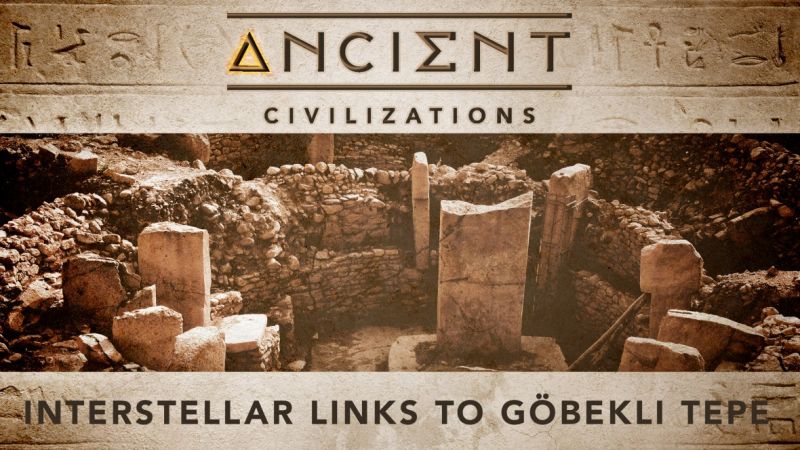Ancient Civilizations – Interstellar Links to Göbekli Tepe: Was Göbekli Tepe built as a sacred interstellar portal connecting the people of Earth with extraterrestrial civilizations? As we conclude Season One, our team of researchers explain that Göbekli Tepe is aligned with the Cygnus constellation and constructed in harmonic resonance with the periodic signals beaming from one of the constellation’s stars. These signals have been found to be transmitting multiples of eleven, which can be found in Pascal’s triangle, and encoded within the placement of the megalithic pillars. As the world’s oldest monument, built in the cradle of civilization, this discovery may be our strongest evidence connecting the establishment of human civilization under the rule of the Annunaki.
Since times immemorial, humankind has searched for the answers to who we are, where we came from and why are we here. Embedded into ancient mythology and our forgotten history, is a code which unlocks our connection with transcendence and paves the way for a new golden age.
Ancient Civilizations – Interstellar Links to Göbekli Tepe
Göbekli Tepe is a Neolithic archaeological site near the city of Şanlıurfa in Southeastern Anatolia, Turkey. Dated to the Pre-Pottery Neolithic, between c. 9500 and 8000 BCE, the site comprises a number of large circular structures supported by massive stone pillars – the world’s oldest known megaliths. Many of these pillars are richly decorated with abstract anthropomorphic details, clothing, and reliefs of wild animals, providing archaeologists rare insights into prehistoric religion and the particular iconography of the period. The 15 m (50 ft)-high, 8 ha (20-acre) tell also includes many smaller rectangular buildings, quarries, and stone-cut cisterns from the Neolithic, as well as some traces of activity from later periods.
The site was first used at the dawn of the Neolithic period, which in Southwest Asia marks the appearance of the oldest permanent human settlements anywhere in the world. Prehistorians link this Neolithic Revolution to the advent of agriculture, but disagree on whether farming caused people to settle down or vice-versa. Göbekli Tepe, a monumental complex built on the top of a rocky mountaintop, far from known sources of water and to date produced no clear evidence of agricultural cultivation, has played a prominent role in this debate.
The site’s original excavator, German archaeologist Klaus Schmidt, described it as the “world’s first temple”: a sanctuary used by groups of nomadic hunter-gatherers from a wide area, with few or no permanent inhabitants. Other archaeologists challenged this interpretation, arguing that the evidence for a lack of agriculture and a resident population was far from conclusive. Recent research has also led the current excavators of Göbekli Tepe to revise or abandon many of the conclusions underpinning Schmidt’s interpretation.




